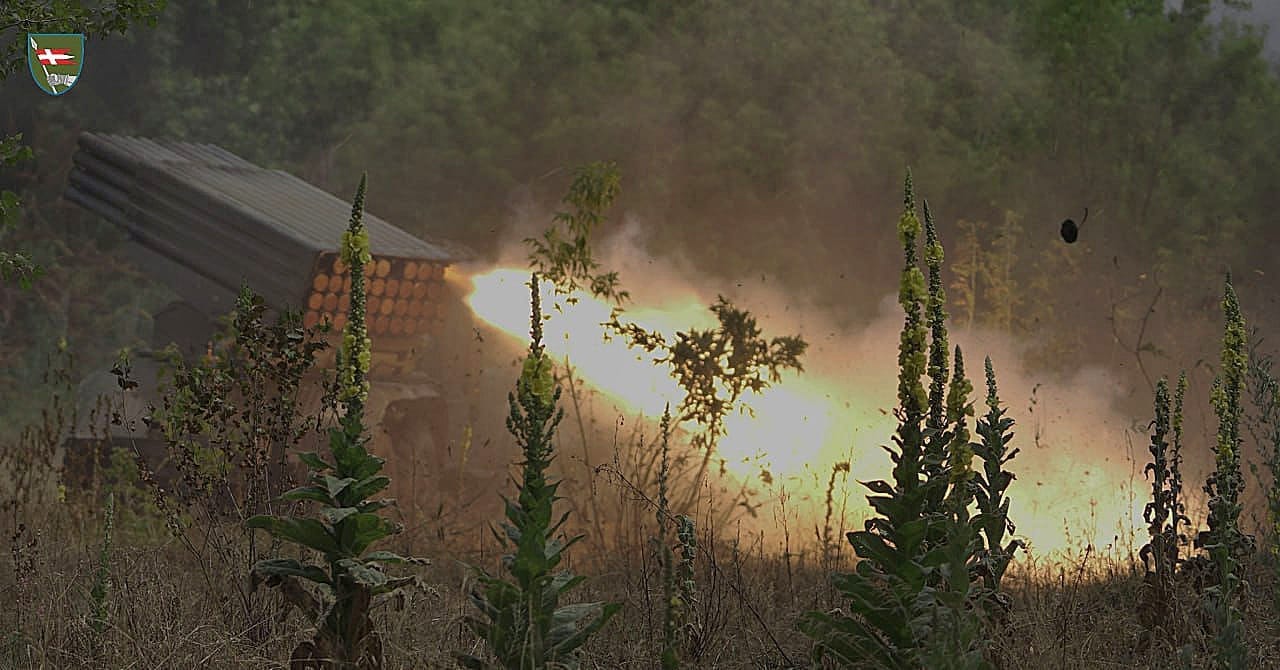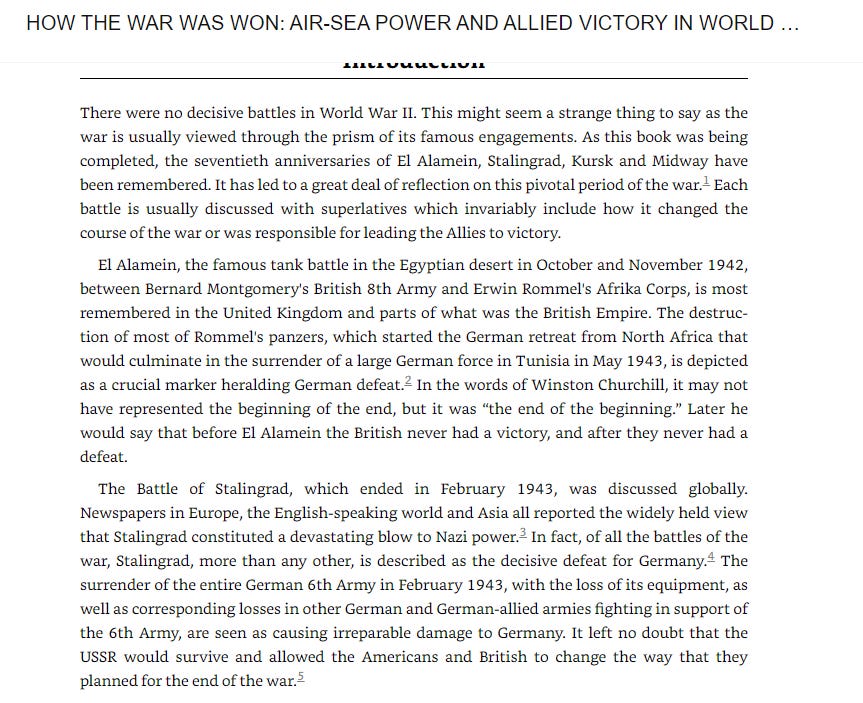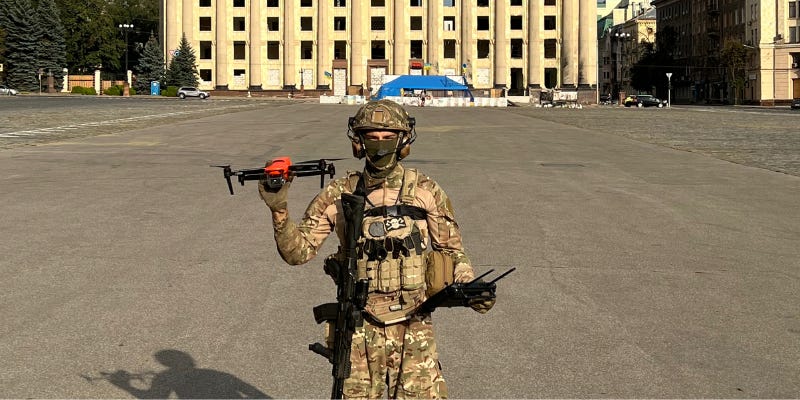As trite as it sounds, the Ukrainian military is a learning organization. Because if it werent, they would all be dead and the Russians would control their country.
So the Ukrainians have learned from the counteroffensive effort to date, adapting their tactics using men and materiel to avoid Russian traps and take advantage of their weaknesses. JL
Phillips O'Brien reports in his substack:
The counteroffensive is revealing the state of the war and the balance between the two armies. Its not determining the outcome of the war, its revealing where we are now. The Ukrainians maintain an advantage in adaptation and learning. (They) have stopped going for the large armored attack, are attacking widely from Bakhmut to Dnipro to spread Russian forces and wear them out. They are making steady progress. 80% of their forces are in reserve and training, learning from the last few weeks, and will perform more effectively when they go into action. The Ukrainians are searching sensibly to find Russian forces using UAVs and infantry. Its mathematical. You must weaken the enemy. The only way to do that is kill Russians and destroy equipment. There is no shortcutSometimes stating the obvious makes people get upset. This was the week when it did become obvious to many that the Ukrainian counteroffensive really would not result in a quick breakthrough (though it was obvious that this was the case after the first week). Some concern over this has masked the fact that the Ukrainians have made steady progress and, crucially, changed their way of fighting to adjust to the reality. That reality, for the time being, is that this seems to be an artillery/MLRS and UAV battle while each side seeks out the other to attack, whereas vehicles are being sent sparingly forward by the Ukrainians for now.
The counteroffensive: Its not slow, its not fast, it is what it is.
Battles reveal, they dont cause. This is a maxim Ive tried to get across a few times in this war, and in my earlier research. We like to think of the event of battle as causing the outcomes of wars—thus the constant attempt to frame wars it terms of their supposedly decisive battles. This actually normally adds a falsifying (though attractive in terms of book sales) element of drama into a war. To try and combat this notion head on, I started How the War was Won: Air-Sea Power and Allied Victory in World War II (Cambridge 2015) with the line: ‘There were no decisive battles in World War II.” To summarize the argument I’m attaching the first few paragraphs of the book.
The overall view of this is that wars are determined militarily by a constant and evolving process of force construction and destruction, and what happens in this battle or that is actually not terribly important in that process. Actually—Stalingrad, Kursk and El Alamein destroyed only a small percentage of German war output.
So what the counteroffensive that the Ukrainians launched (or more appropriately started a new phase in) is doing is revealing the state of the war and the balance between the two armies. Its not determining the outcome of the war, its revealing exactly where we are now. And I would say that we can actually use what we have seen so far to make judgements on the war.
The Ukrainians maintain a healthy advantage in adaptation and learning. What happened early in the offensive is that the Ukrainians tried to press forward with a small number of their specially trained Brigades (most well known the 47th). These units ran face into face with the reality of modern war not involving a dominant power such as the US—vehicles are really vulnerable. Ukraine lost a significant number of Tanks and APCs in a few days. There are simply too many systems that can damage vehicles (mines, artillery/MLRS, hand-helds, UAVs, etc, etc). And what have the Ukrainians done—they have adapted. What has happened in the last two days (if photographic) evidence is to be believed, is that the Ukrainians have stopped going for the large armored attack, and are spreading out efforts in a wide variety of areas to try and spread out Russian forces and wear them out. They are pressing in a wide arc of areas from Bakhmut to the Dnipro front and are making slow and steady progress in many of these. Ive put arrows (apologize for my weak graphic talents) on a Deep State map to indicate where we have seen the Ukrainians press.
This Phase will continue until the Ukrainians believe that they have weakened Russian forces enough somewhere to attempt another armored breakthrough. The Ukrainians still have the vast number of the forces that they have prepared for this offensive ready to go and unharmed. By some estimates it could be as much as 80%. From what we can tell these forces are still in reserve and training (dont forget that—these troops are now learning from the experiences of the last few weeks, and will hopefully perform more effectively when they go into action). The Ukrainians actually care about their casualty levels and dont sacrifice their soldiers to achieve meaningless political victories (see the Russian attempts to take Bakhmut). So when the press again, it will be when they think a real opening will occur. Until then, expect to see the Artillery/UAV/Light force war (see point below) continue.
We dont know where the Ukrainian attack will come—as it will probably be determined by where they think the Russians are weakest. Clearly the Ukrainians had hopes that they could press forward in the centre area of the map above, to split the Russians in Ukraine into two forces. But that is where the Russians are strongest. As such, the Ukrainians have the ability to adapt the next phase of their offensive if it turns out that they have discovered a really weak part of the Russian line (say in the area around Bakhmut or even over the Dnipro). Im sure they would still like to break through in the centre, but they have the capacity to attempt an operation somewhere else.
This is neither fast or slow—it is the pace of operations dictated by the weapons that Ukraine has been given. Ukraine was not given the kind of longer ranged weapons that could have allowed for a long and destructive campaign against Russian logistics and rear positions, before the counteroffensive started. They were armed (somewhat brutally as I argued in the Atlantic in March—https://www.theatlantic.com/ideas/archive/2023/03/ukraine-western-allies-support-supplies/673520/) with weapons for a frontal assault. Well guess what? They are having to deal with that reality now. They have been crying out for more ranged systems for months and months (ATACMs and F-16s the most obvious—but there are more), however except for the recently arrived storm shadows, this aid was not given. Thats the reality—and its bizarre for people to criticize the Ukrainians for going ‘slowly’. They are not—they are doing what they can.
This phase seems to show the dominance of Artillery/MLRS and UAVs (with light forces)
What is the fighting like now? Well pretty horrible really. From talking with some people in Ukraine it might best be described as a Artillery/MLRS war, with UAVs playing an extremely important role in identifying targets on each side and at times attacking them. Because the Ukrainians don’t want to risk their own vehicles and soldiers unnecessarily, they are trying to locate Russian forces and then bring ranged fire down on them as soon as possible. The Russians are doing the same. In this case, at least, Ukraine should have an advantage. They have better NATO standard equipment and have exhibited generally superior command and control. However its still not going to be easy. Success will go to the side which can identify targets the quickest, and communicate orders down to the ranged systems as soon as possible, and which has the ranged systems available to quickly and accurately bring fire down on the target (and then get away quickly to save itself from counterbattery fire).
To go forward and identify Russian ragets, the Ukrainians are using light forces, often infantry, for infiltration attacks on Russian lines. There was this rather shocking but compelling video released by a Ukrainian soldier which described these lighter force operations in graphic detail. I have to link to a Newsweek article as Twitter is such a clusterf&%$£ these days.
https://www.newsweek.com/ukrainian-soldier-reveals-graphic-details-night-russian-trench-1809732
So that seems to be the reality of the war at present as the Ukrainians try to advance. The Ukrainians are searching out as sensibly as possible to find Russian forces using UAVs and infantry even, and then trying to destroy those forces (with artillery/MLRS playing a massive role). Its pretty mathematical, really. If breaking through a strong position is practically impossible, then you must weaken the position, and the only way to do that is to kill Russian forces and destroy Russian equipment. There is no shortcut to this.
Always Remember Domestic Politics
A very interesting poll was released by Reuters this week, showing if anything strengthening support for Ukraine amongst the US population.
https://www.reuters.com/world/most-americans-support-us-arming-ukraine-reutersipsos-2023-06-28/
Basically three quarters of the US population supports continuing military aid for Ukraine. This is in some aspects higher than support last year at this time (there was a dip in support for Ukraine amongst the US population last May). This strong support reveals a few things about how the US population is approaching the subject. Americans are generally of the view that Ukraine can ‘win’ the war. I dont mean to say that the US population has a highly developed idea of what a Ukrainian victory would be—but they do believe that the war is going in Ukraine’s favor and whatever happens Ukraine can end the conflict in good shape. The great worry for Ukraine was not that the US population would get bored of the war—this was always a silly argument, the US does not get bored of war. The great worry for Ukraine was that the US population would decide Ukraine could not win—and this would mean they would not support aid.
One of the reasons all the prewar analysis which focussed on Russian strength was so pernicious, was that it fed the narrative that Ukraine had no chance. In this case, the political leadership in the US had no incentive to support Ukraine, as it looked like it was support that would be wasted. All those articles by Sam Charap and Michael Kofman, for instance, which argued against arming Ukraine because Russia was so strong, created a self-fulfilling prophecy whereby aid was strictly limited.
Now that the US population has seen that Ukraine can fight well, and indeed has shown greater smarts and effectiveness than the Russian military over the last year, it has adjusted to the new reality. The great regret, however, is that it had to take a year of horrible war to get here.
At least, though, Ukraine should be able to maintain most public support from the US (unless for some reason the war turns against them). This domestic political support will matter significantly as it will not just enable, it might even hasten, the delivery of new advanced systems to Ukraine. So pay attention to domestic politics, they always matter.























0 comments:
Post a Comment